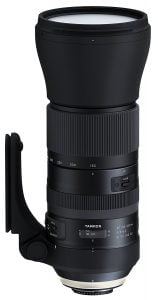 Pros: The big one is reach — at 600mm on my Nikon DX format body it gives a staggering 900mm 35mm equivalent. Excellent image quality throughout the zoom range. Autofocus is quick and responsive, with minimal “hunting” and once locked on stays locked on (as long as you can keep the subject in the frame… sometimes a challenge at extreme focal lengths). Very good build quality. Excellent VR / image stabilisation capability makes hand-held shots at 600mm is surprisingly viable. Good zoom range makes this a very versatile lens.
Pros: The big one is reach — at 600mm on my Nikon DX format body it gives a staggering 900mm 35mm equivalent. Excellent image quality throughout the zoom range. Autofocus is quick and responsive, with minimal “hunting” and once locked on stays locked on (as long as you can keep the subject in the frame… sometimes a challenge at extreme focal lengths). Very good build quality. Excellent VR / image stabilisation capability makes hand-held shots at 600mm is surprisingly viable. Good zoom range makes this a very versatile lens.
Cons: While comparatively light for a lens of this focal length and build quality, it can be a bit cumbersome to carry around for long periods in the field. Shooting handheld for extensive periods will give you a sore arm… a monopod or tripod soon cures that though. Sometimes found myself yearning for an extra stop or two as the light faded. Most of the “cons” were down to the photographer (always learning), or long-lens photography in general, rather than with this lens in particular.
Price: €1,475 available for Nikon (tested), Canon and Sigma mount DSLRs
Value: Excellent
Rating: Highly Recommended
The G2 is the second generation of Tamron’s groundbreaking 150-600mm super-zoom, and introduces a number of refinements to the original model, including a fresh design, professional grade build quality and fully weather-sealed construction, improved optics, better autofocus performance and revamped VR. The result is a versatile all-round performer at an attractive price. It’s perfect for the budding wildlife photographer on a budget looking to get a bit closer to their subject without breaking the bank, and for birders and wildlife watchers who want maximum reach and flexibility for those all-important record-shots in the field.
View the Tamron SP 150-600mm F/5-6.3 Di VC USD G2 on the Tamron UK website.
You can buy the Tamron SP 150-600mm G2 on Amazon UK or Amazon US.
|
Tamron SP 150-600mm F/5-6.3 Di VC USD G2 Full Review
The first thing I’ll point out here is that this isn’t going to be like the reviews you’ll read for this lens on photography blogs and professional photography websites. I’m reviewing it here from the perspective of a birding and wildlife enthusiast looking to photograph and share images of the wildlife I see in the field.
You won’t get photos of resolution charts, and detailed technical examination of the optical characteristics of the lens elements and all that fascinating photographic minutiae. What you will get is an honest account of my experience using this lens in the field to photograph wildlife, and some examples of the results I’ve managed to achieve in my brief time with it photographing real, living, breathing, moving subjects on Ireland’s south coast.
So… let’s see what this lens is really like.
Balance handling and build quality
The SP 150-600mm G2 arrives in an attractive, surprisingly compact box, given its impressive focal length. And when you unpack it you find that without the large lens hood attached, or with it reversed, it is quite a compact unit.
When you pick it up it feels solid and well made, but, at just shade over 2kg, it wasn’t as heavy as I was expecting given it’s specification. The finish on this lens is really good… the design is modern and Tamron has obviously paid attention to build quality. It feels like a high-end product.

The compact feel diminishes somewhat when you attach the sizeable lens hood and zoom the lens out to its full 600mm focal length, but it is still manageable. Connected to my Nikon D7200 DSLR body the combination felt quite balanced, and, to my surprise, easily hand-holdable. I was expecting to need a tripod or at least a monopod to use this lens, but from the very first moments I knew it would also be a useful lens for ultra-mobile handheld shooting — which is ideal for when you’re out birding or wildlife watching.
If anything I think a slightly heavier body (like the Nikon D500) would result in an even more balanced set up. The D7200 feels perhaps a little light paired with this lens.
It’s also worth noting that unlike the first version the G2 lens is now fully weather-sealed, so you can use it with confidence in dusty or (a boon here in Ireland) wet environments.
Focusing
The 150-600mm G2 features Tamron’s USD (Ultrosonic Silent Drive) autofocus system, that is both quick and quiet in use. All you hear is a soft whirring as the lens brings your subject into sharp focus, and, if you have continuous focus and subject tracking enabled in your camera (as you almost always will have when photographing birds and wildlife) the occasional subdued “thunk” as the lens changes focus direction to keep your subject sharp.

Very occasionally I struggled to focus on what I intended to first time… particularly with comparatively small subjects, like birds against a detailed background, when the camera would sometimes choose to focus on the background detail rather than the bird. This is a common autofocus foible that’s as much to do with the camera as the lens. It was easily remedied by a quick turn of the manual focus override ring, or by shifting composition, refocusing on something the same distance away as the subject, then re-framing and focusing on the intended subject again.
That did mean I missed the occasional shot, but generally I found focusing very responsive and accurate with this lens, with only minimal hunting now and again, and only ever in tricky situations where the intended subject didn’t really stand out.
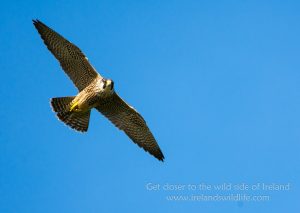
Nikon D7200, Tamron SP 150-600 G2 1/1000 sec 600mm f7.1 ISO 400
Tracking moving subjects and keeping them in focus is one of the biggest challenges with wildlife photography, particularly birds in flight. At first I struggled to get birds in the frame at all. That huge 600mm reach equates to a 900mm 35mm equivalent focal length on my D7200, and that made finding flying birds in the viewfinder, and keeping them in the focus “zone” a real challenge at first.
Practice is the key, and over a relatively short space of time I started to get the hang of it… although it can still be an exercise in frustration with small, fast moving birds. Once I had the subject centred in the viewfinder the lens / camera combination had no problem locking in focus and tracking the subject within the limitations of the camera body’s autofocus capabilities (i.e. every shot in a sequence wasn’t always sharp. I have my camera set to prioritise shutter release over focus to capture the shot in tricky situations, so inevitably the shutter occasionally fires while the lens was still focusing).
I’ve used the SP 150-600mm G2 from relatively unstable platforms, like moving boats, and managed to get some good results tracking fast moving subjects like flying birds and dolphins.

The minimum quoted focus distance of 2.2 metres is good for a lens of this focal length, and combined with the ability to zoom out when subjects move closer makes for some very versatile shooting opportunities. It also means this lens is suitable for getting close ups of larger insects like butterflies and dragonflies at rest, and even perhaps in flight… although that’s a trickier proposition.
Another useful feature is the focus range limiter switch, which allows you to reduce the focus travel to a subset of the full focal range so the lens can focus faster in specific shooting scenarios. You can choose between the full focal range (the obvious default), 10m to infinity (when photographing general / distant subjects), or 2.2m to 10m (when you’re concentrating on close ups).
A manual focus ring on the lens barrel can be turned at any time to override the autofocus and manually focus the lens. It rotates quickly and smoothly and is a handy feature on those rare occasions when the autofocus struggles to lock on to your intended subject.
Image Stabilisation / Vibration Reduction / Vibration Compensation

The Tamron SP 150-600mm G2 features a revamped VC (Vibration Compensation) system with three modes to choose from using a convenient switch on the lens barrel. VC mode 1 strikes a happy balance between stabilising the viewfinder image (making your subject easier to frame at long focal lengths) and stabilising the captured image, VC mode 2 is designed for panning, so won’t attempt to dampen intentional horizontal motion, and VC mode 3 forgoes viewfinder stabilisation in favour of maximising stabilisation of the captured image.
Tamron claims that in mode 3 this new VC system achieves the equivalent of a 4.5 stop benefit based on CIPA (Camera and Imaging Products Association) defined standards.
In theory that means you can shoot handheld at longer focal lengths using much slower shutter speeds than you might expect and still end up with sharp images. In turn that means you can use a lower ISO, effectively reducing noise and improving image. The caveat (particularly for wildlife photography) is that VC doesn’t help much if your subject is moving, but it is a really useful feature, and works very well in this lens.
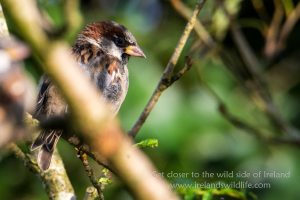
For general photography I simply left VR set to mode 1 and was pleased, and often surprised by just how slow I could go with the shutter speed and still get acceptable results. I’d often forget to switch to panning mode (mode 2) for birds in flight or dolphins making a beeline for the boat, but still managed good results in mode 1. Mode 3 made it somewhat harder to frame and maintain the subject in the viewfinder, but did deliver a noticeable step up in performance when it came to the sharpness of the captured image — BUT only for stationary subjects.
Generally mode 1 VC works really well as a general purpose option — and you can switch to one of the other modes for specific shooting scenarios as necessary.
Zooming in and out

While anyone buying a 150-600mm zoom is likely to spend more time using it at 600mm than at 150mm, the flexibility of being able to zoom out makes this a very versatile lens for wildlife. One of the problems with long prime lenses is that if your subject approaches you (as can happen surprisingly often), you simply can’t fit your subject in the frame or can’t focus close enough to get the shot.
I do a fair bit of photography out on boats off the West Cork coast, where wildlife like seals, dolphins, whales and seabirds often venture surprisingly close. It’s great to have the 600mm (900mm equivalent on my DX body) to pull in distant action, but having the ability to quickly switch to a lower focal length to capture closer subjects or get a wider perspective with more context is invaluable.
The wide zoom ring has plenty of grip and moves smoothly with a moderate amount of resistance that makes it quick and easy to zoom to any point in the zoom range. A handy new feature introduced in the G2 is the ability to lock the lens at any point in its zoom range by simply sliding the zoom ring forward. It means you can confidently photograph at any zoom setting, at any angle, without the risk of the zoom creeping one way or the other due to gravity. It’s also useful to prevent the lens from extending as you walk around with your camera over your shoulder between shots.
In addition to the zoom ring lock, which fixes the zoom at any focal length while shooting, there’s also a zoom lock switch that will lock the lens in the 150mm position for transport / when not in use.
Optical Features and Image Quality
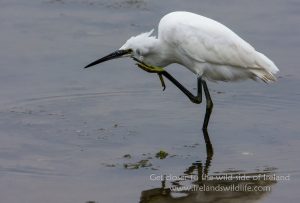
The optics of the Tamron SP150-600mm G2 feature 21 elements in 13 groups, including three LD (Low Dispersion) elements to eliminate chromatic aberration. The lens also incorporates Tamron’s proprietary suite of anti-reflection technologies, including eBAND (Extended Bandwidth and Angular Dependency) and BBAR (Broad-Band Anti-Reflection) coatings to improve light transmission through the lens and suppress internal reflections, effectively eliminating the ghosting and flare often caused by reflections inside the lens.
Finally a water and oil repellent fluorine coating on the front lens surface helps protect it from the damaging effects of dirt, moisture and fingerprints, and makes it much easier to keep clean.
In terms of image quality, when light is good, and the subject is close enough to avoid any distortion or haze due to atmospheric conditions, the lens produces razor sharp images with tonnes of detail throughout its zoom range, even wide open. It does seem a shade sharper when stopped down one or two stops, but really it’s hard to notice a difference with real images.
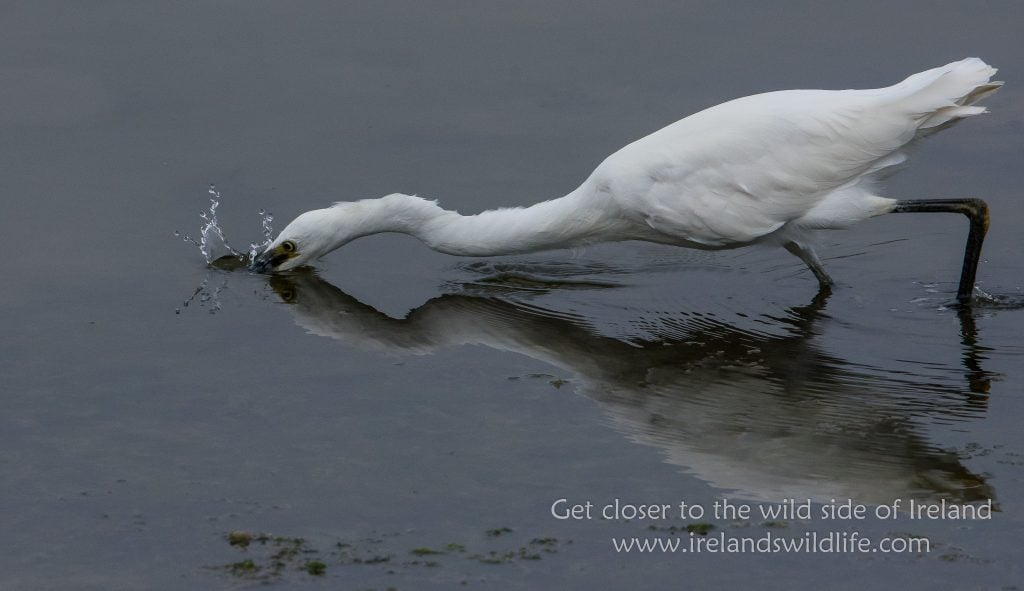
I’m sure if you were to go out and take lots of photographs of resolution charts and straight lines in consistent conditions and lighting then you’d be able to pick out subtle variations. But for the most part nature in this part of the world has little to do with straight lines and consistency. The optics in the Tamron SP 150-600mm G2 appear to produce consistently high quality images across a wide range of focal lengths, apertures and in a variety of conditions.
The main caveat is, as with any long lens with a comparatively small maximum aperture (f5.6-6.3) you need plenty of light to produce the best results. The VC system build in to the Tamron helps enormously, but with moving subjects you’re still going to need lots of light to get the shutter speeds you need.
As the light falls off, and you’re forced to bump up the camera ISO to get the shutter speeds you need to freeze the action, you’ll end up with noisier images. Quality suffers, but that’s not really the lens’s fault — it’s simple physical laws at work.
A word about maximum apertures, low light and high ISO
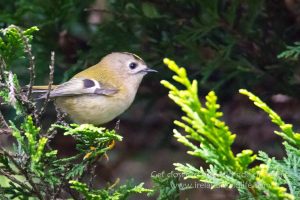
The relatively small maximum aperture of the Tamron SP 150-600mm G2 is a limiting factor, there’s no doubt — but it’s a compromise that a) brings the lens in at an affordable price point and b) makes it portable and versatile enough to handhold relatively comfortably in the field.
It means that this lens is not the best choice for professional low-light photography — but to improve things in that regard you’ll typically have to pay several times more for a fast prime lens. Even then you’ll lose a lot of the versatility that gives this lens its appeal.
But just because you can’t get the best out of the lens in low light, that doesn’t mean that you can’t use it in low light. You certainly can — it just means the images you get won’t be of the same quality.
With modern camera bodies capable of shooting at high ISO levels you can get perfectly acceptable images with the 150-600mm G2 as the light fades. The resulting images will just have high levels of noise (the digital equivalent of film grain, if you like) but will still be useful as a photographic record shots of the wildlife you see (see the goldcrest image shot at an ISO of 25,600).
Conclusions

I’ve thoroughly enjoyed testing the Tamron SP 150-600mm G2 lens. The build quality is superb, performance is great and it produces some outstanding images. The 900mm 35mm equivalent focal length on a DX / APSC body is staggering, yet the flexibility afforded by the zoom means you can capture images you would otherwise miss.
Yes, a comparatively slow maximum aperture is a drawback… and you do need plenty of light to get the best out of this lens. But overall it’s a fantastic all rounder, and an ideal next step for the keen amateur wildlife photographer on a budget, or those looking for a longer lens to get better photographic record shots of the species they see in the field.
You can buy the Tamron SP 150-600mm G2 on Amazon UK or Amazon US.
|
Technical Specification
Taken from the Tamron UK website.
| Focal Length [mm] | 150-600 |
| Maximum Aperture | 5-6.3 |
| Minimum Object Distance [m] | 2.20 |
| Maximum Magnification Ratio | 1:3.9 |
| Filter Size [mm] | 95 |
| Weight [g] | 2,010 |
| Item No | A022 |
| Groups-Elements | 13 – 21 |
| Angle of view | 16°25′-4°8′ |
| Diaphragm Blades | 9 |
| Minimum Aperture | 32-40 |
| Diameter x Length [mm] | 108.4 x 260.2 |
| Available Colors | Black |
Acknowledgement
I’d like to thank Tamron UK for sending the SP 150-600mm F/5-6.3 Di VC USD G2 in for review on Ireland’s Wildlife.
NB. Ireland’s Wildlife has no specific affiliation to any optics or gear manufacturer. All reviews on the site are completely independent and objective and carried out in accordance with our terms and conditions. If you’re an optics or gear manufacturer and would like to submit your product for review on the site please drop us a line using the contact form and we can take things from there.


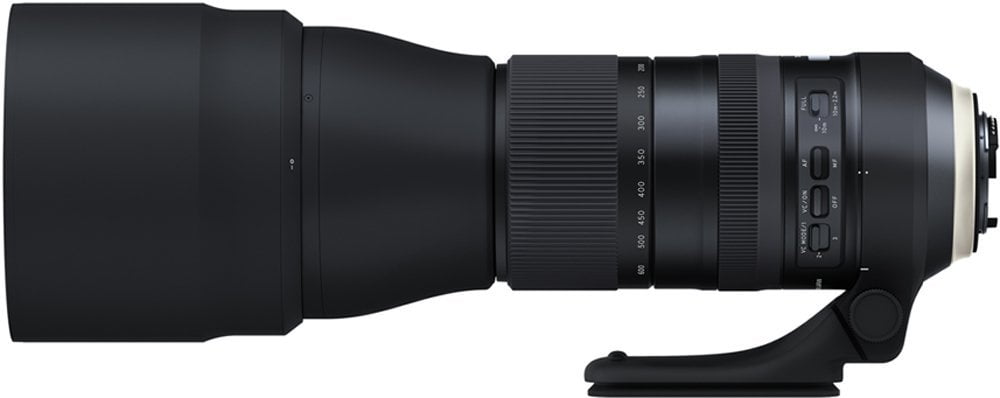
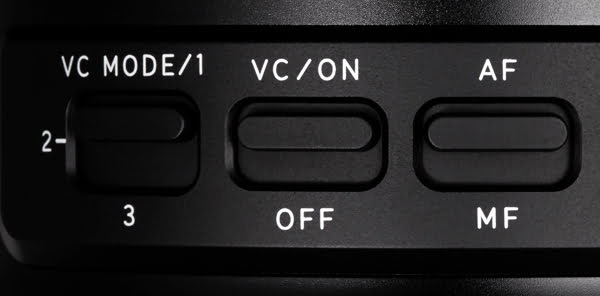
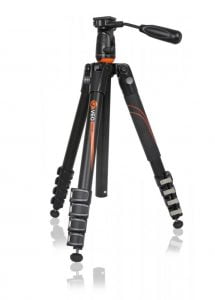







5 comments
Sean Laffey
Thanks for ther review, I am considering this lens for bird photography and your practical notes on how to get the best oit of it have really helped. One caveat though, it has a 900 mm Field Of View equivalent in 35mm terms on an APSC sensor. It doesn’t have a magnification effect, the image that is projected onto the sesnor is the same size , the circle of focus is just tighter. I’d be using this on both APSC and full frame bodies.
Les Leyh
I found your article just the other day. This is a very late post but I figure “what the heck”:as your findings are very accurate from my experience. I shoot with. Nikon D500 and have been using the Tamron 150-600 f5-6.3 VC USD G2 for about a year now. I use it for various wildlife photos plus birds where for smaller bird more focal length is always welcome. I bought my copy from a fellow photographer who was switching to mirrorless and using a format that Tamron didn’t cover.. it was barely used. I find the lens is hand holdable but I often use a Benro SupaDupa Monopod especially when I am out for longer periods. This lens can feel quite heavy after awhile so the monopod helps considerably. The Tamron focuses really fast and can really track exceedingly well on the D500 however this is largely because of the D500’s focusing system as well as Tamron great design. The D500 solves some of the low light issues as my photos look good even at 3200 iso but that is pushing it.
Thanks for taking the time to give a great review from the standpoint of actual use instead of lab results.
Gordon Brugman
Thanks, Calvin, for this real-world non-techno speak review. I am an experience landscape photographer who has decided to branch into more wildlife and bird-in-flight photography. Your emphasis on in-the-field experience with this lens was invaluable.
Calvin Jones
You’re very welcome Gordon. Delighted you found the review useful. Best of luck with your foray into wildlife photography.
Dermot
Hi Calvin, I’ve only come across your informative article now, stumbled across it researching the tamron 150 to 600 lens.
As a relative novice in the art of bird photography I would appreciate your advice,would you recommend this lens over the tamron 100 to 400 lens ir maybe a 70to 200 2.8 lens for more light.
At the moment I’ve got a canon 1200 d with 18 to 55 kit lens and I’m leaning towards getting the canon 90d camera for Christmas ???? ( hopefully)
Looking forward to your opinion
Regards Dermot